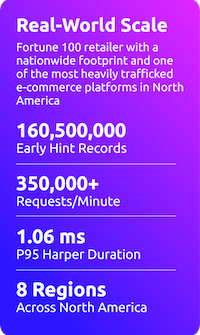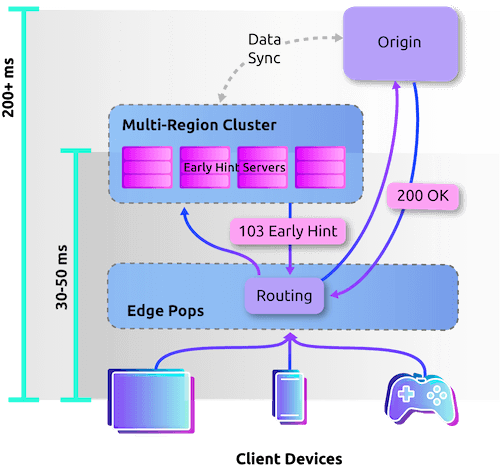


In the competitive landscape of web applications, every millisecond between request and render is an opportunity to captivate or cull potential customers.
Harper’s Early Hints solution shortens the wait by prompting web clients to proactively download high-priority resources using a partial 103 HTTP response before the full 200 response is returned. That means by the time your application is ready to render a hero image, key css, or mission-critical JavaScript, the browser already has it.
The result? Faster time-to-interaction, improved CWVs (Core Web Vitals) like LCP (Largest Contentful Paint), and better outcomes across the board—from SEO to conversions.

For many, web performance has matured from a front-end afterthought to a board-level priority. Whether you're building an e-commerce site, a travel booking platform, or a global news site, speed is a key growth lever.
Even minor delays in response time can cause significant degradation in CWVs, bounce rates, and conversions. And as applications become more dynamic and data-driven, the gap between request initiation and response generation has widened.
That’s the window Early Hints is designed to target: the idle latency that exists between the initial request and your server’s full response. With Harper, you convert that downtime into a head start.
Harper approaches Early Hints as a native extension of its fused architecture, where compute, storage, and caching functions are delivered in the same runtime, ensuring extreme performance at scale. Distributed to multiple regions, Harper minimizes both server and network latency, ensuring hints arrive before HTML content.
Key Benefits:

Early Hints enhance page performance without modifying a single line of application logic. Whether you're optimizing for Core Web Vitals to drive SEO or delivering lightning-fast experiences to boost conversions, Harper makes low-latency easy.
Contact our team at sales@harperdb.io to activate Early Hints today.


